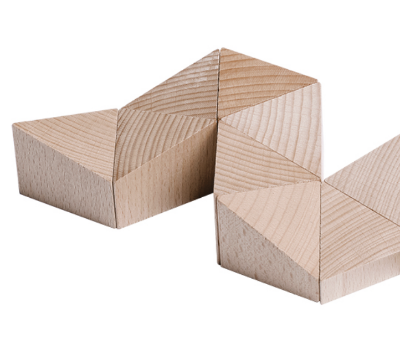
Introduction: Maths / Math chapters

The book is designed to provide tasks for all age groups with different levels of prior knowledge, ability and diverse interests. The exercises are grouped by topic. The levels of difficulty are noted as follows: S - standard, A - advanced, AS - suitable for differentiation. The age groups are based on the Mathematics Syllabus of Hungary and are similar to the grades in the UK and most European school systems. There are exercises for individual, pair and group work. [br][br]The exercises consist of 4 parts: [br][list=1][*]Description[/*][*]Solutions/Examples[/*][*]Prior Knowledge [/*][*]and Recommendations/Comments. [/*][/list]The Description contains the instructions for the exercises which are often given in different Levels. Unless otherwise stated in the Recommendations/Comments part, the Levels are in order of increasing difficulty. Further guidelines can be found in the Recommendations/Comments part alongside the list of exercises to be solved before or after the exercise. When there is an exercise recommended to be solved beforehand, the duration is determined assuming that the solutions of the prerequisite are known.
[b][size=150][url=https://www.geogebra.org/m/jdtsvxye][img]https://www.geogebra.org/resource/dbct9vwj/KLNgJXXEi4ENaIQS/material-dbct9vwj.png[/img] [img]https://www.geogebra.org/resource/kzb8btnw/BFFApXvggX4MvbHe/material-kzb8btnw.png[/img][br]Chapter 1: Intro and Games[/url][/size][/b][br]The exercises found in the Intro topic are specifically designed to get students familiar with the Logifaces Set and with the rules of building Logifaces constructions. We recommend starting with these exercises to practise the notations and terminology used throughout the whole Maths part. The games can be played to improve logical thinking and spatial vision and also to have fun with the Logifaces Set whenever there is an opportunity to play in the class.[br][br][url=https://www.geogebra.org/m/jdtsvxye]Find all Intro and Games exercises here[/url]
[b][size=150][url=https://www.geogebra.org/m/mek9rzzb][img]https://www.geogebra.org/resource/pthmpfa9/QRqEGfVJichayvvY/material-pthmpfa9.png[/img][br]Chapter 2: Logical thinking[/url][/size][/b][br]This chapter contains a variety of exercises to improve logical thinking skills (from easier tasks for lower grades to those requiring more complex mathematical thinking, like proofs) in the Logic topic, while the exercises of the Graphs topic can be used as an introduction to this mathematical domain.[br][br][url=https://www.geogebra.org/m/mek9rzzb]Find all Logical Thinking exercises here[/url]
[b][size=150][url=https://www.geogebra.org/m/hcbddq6j][img]https://www.geogebra.org/resource/jbweynwr/wCQNFpF4ut1fnYxb/material-jbweynwr.png[/img] [img]https://www.geogebra.org/resource/gkcj5ubw/9KidtUhRDgOImcdx/material-gkcj5ubw.png[/img][br]Chapter 3: Numbers and Sequences[/url][/size][/b][br]This chapter contains fun and playful exercises to practise basic operations and arithmetics. Students can learn about number systems and in the Sequences topic there are more challenging tasks, involving proofs.[br][br][url=https://www.geogebra.org/m/hcbddq6j]Find all Numbers and Sequences exercises here[/url]
[b][size=150][url=https://www.geogebra.org/m/t6em567e][img]https://www.geogebra.org/resource/mcktgha2/3abBAqYRU8SdOI08/material-mcktgha2.png[/img][br]Chapter 4: 2D Geometry[/url][/size][/b][br]In this chapter the reader can find exercises for practising basic geometrical concepts such as recognizing different types of polygons, measuring angles, finding the perimeter and the area for polygons, using the Pythagorean theorem and Heron’s formula. In addition to the tasks in the Intro part, these exercises provide further opportunity to get familiar with the Logifaces Sets and the blocks themselves. [br]Additional practical information relating to this chapter:[br][list][*]If not mentioned otherwise, the parameters of the blocks are measured in standard units[br][/*][*]The notation |AB| stands for the length of the segment AB[/*][/list][br][url=https://www.geogebra.org/m/t6em567e]Find all 2D Geometry exercises here[/url]
[img]https://www.geogebra.org/resource/ustcdx69/JtR18BlLvkdMlwZx/material-ustcdx69.png[/img][br][b][size=150][url=https://www.geogebra.org/m/raq4wnfr]Chapter 5: 3D Geometry[/url][/size][/b][br]This chapter covers the following topics: Surface area and Volume calculations, Trigonometry, Transformations, Coordinate geometry and Nets. Most tasks are designed to improve spatial vision, whether through craft, manipulation of digital models or working through calculations.[br]Additional practical information relating to this chapter: [br][list][*]Axial symmetry means that the shape is symmetrical to the reflection about some line in 3D. [br][/*][*]In the Transformations topic all rotations are anticlockwise rotations, unless otherwise stated. [br][/*][*]In some exercises there is a need for other tools beside the Logifaces Sets, such as plasticine or straws. [br][/*][*]Some exercises need access to GeoGebra. In all the other exercises we also recommend the use of GeoGebra, as all the illustrations can be opened in it.[/*][/list][br][url=https://www.geogebra.org/m/raq4wnfr]Find all 3D Geometry exercises here[/url]
[b][size=150][url=https://www.geogebra.org/m/h38jt6kf][img]https://www.geogebra.org/resource/r9p7rzph/xD5YIb5E8puFY8X3/material-r9p7rzph.png[/img] [img]https://www.geogebra.org/resource/dyzhjfkx/wQwBhBvBV5aUQ7aI/material-dyzhjfkx.png[/img][br]Chapter 6: Combinatorics and Probability[/url][/size][/b][br]This chapter contains exercises with a wide range of difficulty, where the emphasis is often on the reasoning, not just the final answer. As both Combinatorics and Probability are among the less intuitive topics, students often struggle with it and need significant support from their teacher to understand and communicate their own thinking. The Solutions/Examples parts in this chapter generally only show one way of approaching the task, please note that at times there are several correct processes.[br]Additional practical information relating to this chapter: [br][list][*]Prism 333, 444 or 555 refers to a prism built from two Logifaces blocks that has a height of 3, 4 or 5 units. [br][/*][*]We use the notation Cnk for "n choose k", the number of ways to choose an (unordered) subset of k elements from a fixed set of n elements, so Cnk=n!k!(n-k)!.[br][/*][*]Probability of an event: [br][/*][/list]Pr(event)=number of favourable outcomestotal number of outcomes, where all outcomes are equally likely.[br][list][*]By Total number of outcomes we refer to the whole 9 or 16 pcs Logifaces Set, instead of the total 11 different existing Logifaces pieces.[br][/*][*]The addition rule of probability states for two events A and B that[br][/*][/list] P(AB)=P(A)+P(B)-P(AB).[br][br][url=https://www.geogebra.org/m/h38jt6kf]Find all Combinatorics and Probability exercises here[/url]